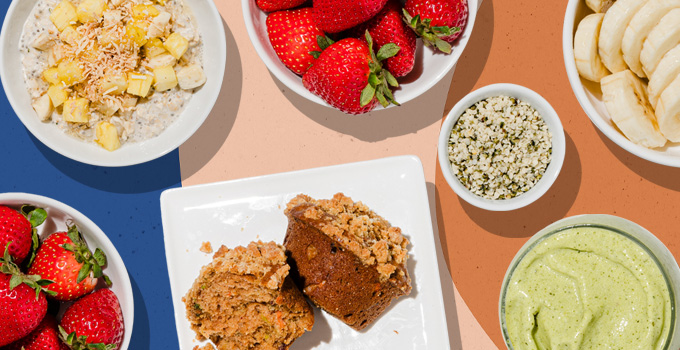Gut health is a hot topic. As a dietitian with a focus on gastrointestinal conditions, this is one of my main areas of interest.
Your gut microbiome is made up of trillions of microorganisms that inhabit your gastrointestinal tract. Health-promoting gut microbes contribute to digestion, nutrient absorption and bowel health and function, and they support our immune system.
Most Canadians, including children, consume about half of the recommended intake for fibre. One of the best things we can do to support those health-promoting gut microbes is eat more fibre.
Prebiotics are a specific type of fibre that escape digestion and travel to the large intestine where they provide fuel for the good bacteria. Prebiotics also help to fight disease-causing bacteria. Most prebiotics are a type of fibre, but not all fibre are prebiotics. That said, eating more fibre overall supports our health and our gut in many ways.
The following foods are considered prebiotics:
- Vegetables: garlic, onion, asparagus, savoy cabbage, peas
- Fruit: apples, ripe bananas, nectarines, dates, figs
- Whole grains: oats, wheat bran, barley
- Legumes: kidney beans, chickpeas, soybeans, lentils, bean-based flours
- Seeds: chia seeds, ground flaxseed, pumpkin seeds
These foods aren’t exactly what kids naturally gravitate towards. If you focus on more consistent intake of fibre-rich foods overall, there’s a good chance prebiotics will increase, too.

Here are five ways to incorporate more fibre, including prebiotics, into your diet:
- Add fruit or vegetables to most meals and snacks. Even if the portion is small, consistency is key. Add vegetables to soup, stews and sandwiches; include raw vegetables with a favourite dip; purchase bagged salads for convenience. Allow your child to choose their favourite fruits and vegetables, even if they choose the same ones over and over. Slowly expose your child to new veggies and fruit without pressure.
- Serve frozen fruit or veggies. Add your child’s favourite frozen fruit to smoothies, oatmeal, muffins or scones. Serve frozen peas as a pre-dinner snack.
- Boost your baking. Homemade baking is a great way to incorporate prebiotics. Add ground flaxseed, wheat bran, oats, mashed or chopped fruit, and even pulse-based fibre to cookies or muffins. Hint: Swap half the regular flour in a muffin recipe with Co-op Gold Pure Faba Bean Flour, like in these Prebiotic Banana Chocolate Chip Muffins.
- Add beans or lentils to meat-based dishes. Try adding canned lentils to pasta sauce, chickpeas to chili or kidney beans to soup.
- Make trail mix. Make your own trail mix with nuts, pumpkin seeds and dried fruit like dried apples, banana chips, raisins and chopped dates.
Brooke Bulloch, Registered Dietitian (BSc)
Food to Fit Nutrition Inc.

